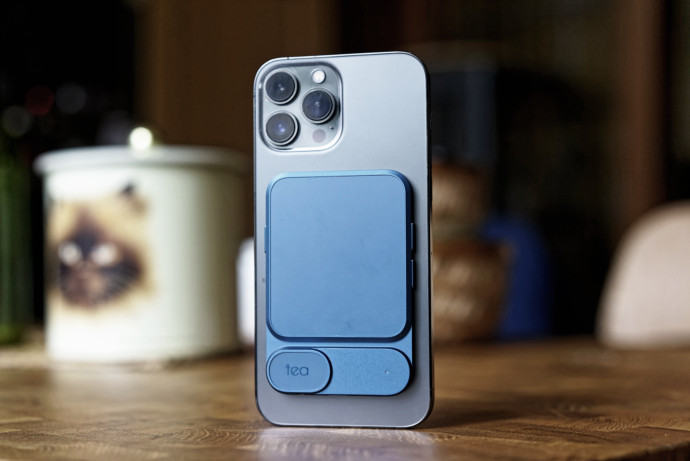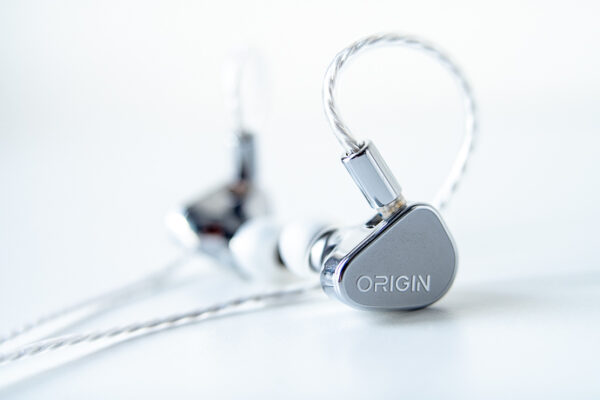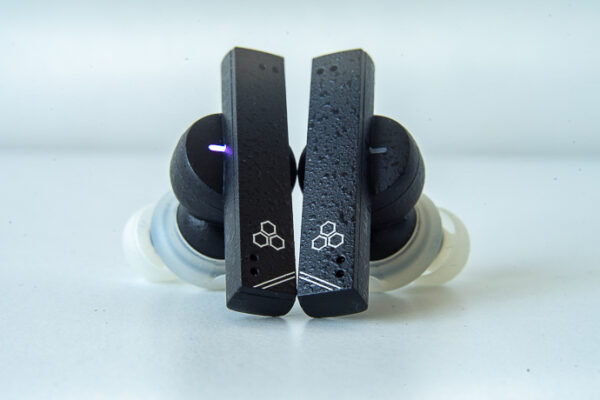If Google took you to this page directly, click here to go to the start: https://www.headfonia.com/khadas-tea-review/
Design & Build Quality
Build Quality
Slim and sleek, the Khadas Tea is one of the most exquisite devices I had a chance to review, every price range included. Made of blue-tinted aluminum, covered with tempered glass, it’s lightweight but doesn’t feel cheap in the hand, thanks to its anodized finish. It clearly mimics Apple’s AirPods Max in this regard and, next to my iPhone 13 Pro, it doesn’t fall short.
In fact, the design is clearly inspired by Apple’s devices. From the volume button to the power switch, that works exactly like Cupertino’s ones, which is a real good thing. It only sports a 3.5mm jack output and no 4.4mm Pentaconn, maybe for size reasons, and no 2.5mm – which is kind of sad but at least they didn’t try to put something they couldn’t handle.
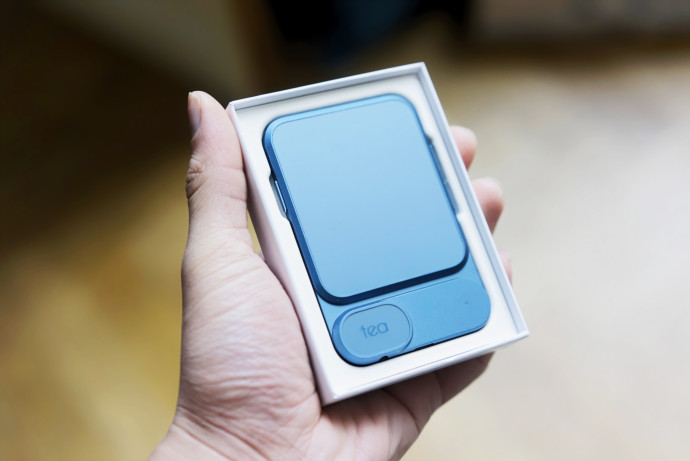
Casing
As I said, the Khadas Tea’s case is made of one solid piece of metal, free of any screws or gaps. It’s 95.5mm long, 63.8mm wide, and 7.95mm tall for a total weight of 73,5g. Impressive numbers that make the DAC one, if not, the thinnest device I own in my full catalog of DAC/AMP.
If the back is completely flat, the front side is made of two parts, one hiding the battery, and the other the PCB with DAC and Bluetooth chips. A third “bump” that looks like a camera cover is also located near the bottom side, lightly etched with the name of the product, “Tea”.
On the left side, you get one button that works as power on/off, and a play/pause/fwd/prev, while the right side gives you the volume rockers. It’s solid, clicky and you’d be hard press to find any flaw in this design.
All in all, it’s an impressive piece of work, and it really gives an excellent impression.
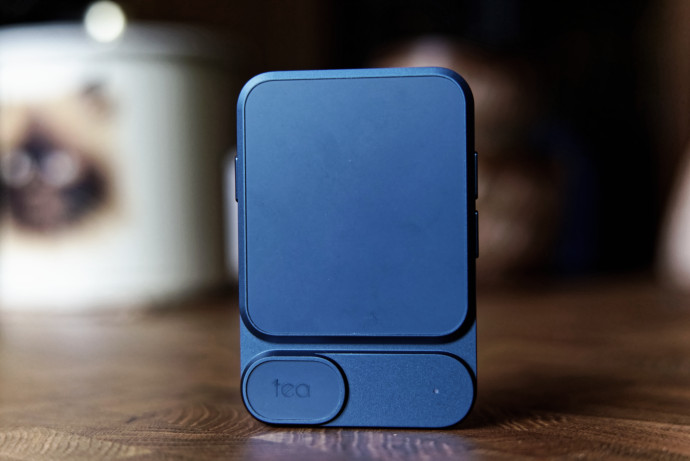
Bundle
The bundle is pretty minimalistic and, once again, reminds us of Apple’s.
The box itself is slim, white with a 1:1 sized picture of the Khadas upfront and a quick description of the device behind. Inside you have:
- the Khadas Tea
- an USB-C to USB-C short cable
- an USB-C to Lightning 8-pin cable
- some documentation
Pretty dire if you were to ask me, but… you get a Lightning to USB-C cable! And that alone usually costs $35-40, so it’s more for less (or the other way)
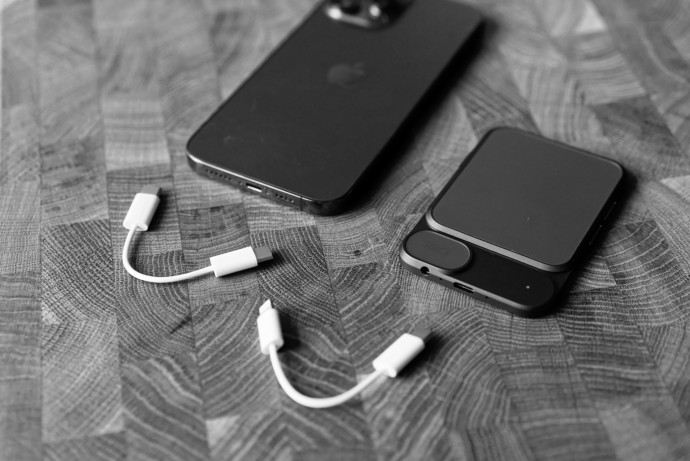
Daily use
The Khadas Tea is as geeky, as easy to use.
You have two way of using it (like iFi’s Go Blu) wired, like your usual DAC/AMP and wireless thanks to the Bluetooth connection.
Wired connection
You turn it on, plug it into your phone (iOS/Android), insert your headphone jack, and you’re good to go. The Tea comes with a USB-C to 8-Pin cable by default, which is pretty rare, that allowed me to connect my iPhone directly. The MFi certification is a big plus too, as it means that you’ll be able to use the Khadas with upcoming iPhone, without worrying if it will, or won’t work.
It also works with an Android device, in fact, my FiiO M11 Plus LTD, connected with the USB-C to USB-C cable, was able to see the Tea as an external DAC too. As usual, with android devices, it can be hit or miss, depending on the one you’ll be using, so you better check on forums beforehand.
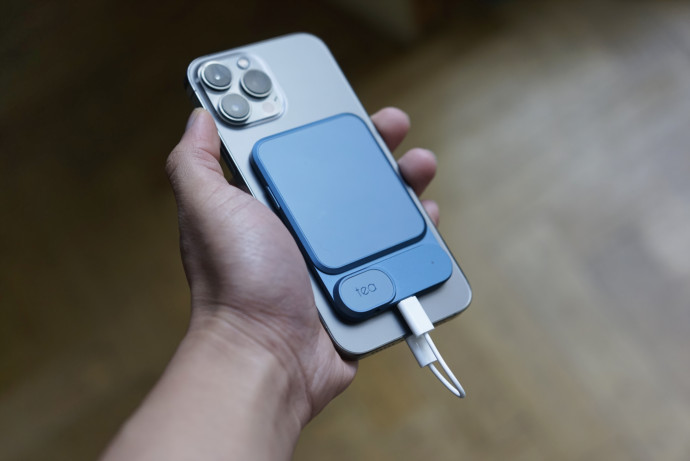
Wireless connection
On a bizarre turn of events, the Khadas Tea gets a Bluetooth chipset, for wireless pairing. All you have to do is turn on the device with no cable attached, and the DAC will automatically switch to Bluetooth pairing mode. Then, all you have to do and select the DAC in your Bluetooth list, and you’re good to go.
It worked with my phone, my computer, and the iBasso DX300, almost flawlessly each time – just had to reboot once, but that may just have been a bug.
On the go, it’s a pleasant device to use, and the small size allowed me to carry the tea every time and everywhere. Especially thanks to its thin design, that can fit every pocket, every time.
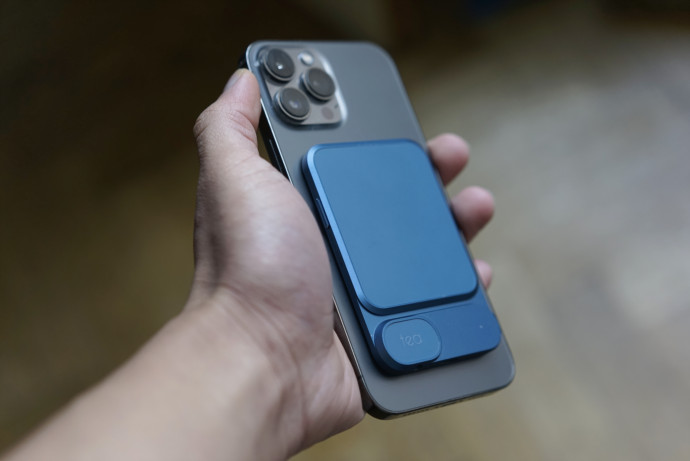
Magsafe
But, the biggest surprise came from the Magsafe compatibility. Yes, you can pair your Khadas with your iPhone, simply by sticking it to the back of your phone. It’s not as powerful as your usual band, but for those who ever did that with their phone, the bond is strong enough to withstand daily use.
It fell a few times when I pushed it sideways, but never when I took it from my pocket. And by the way, it only works if you don’t use a cover on your iPhone, or if you use a Magsafe compatible cover.
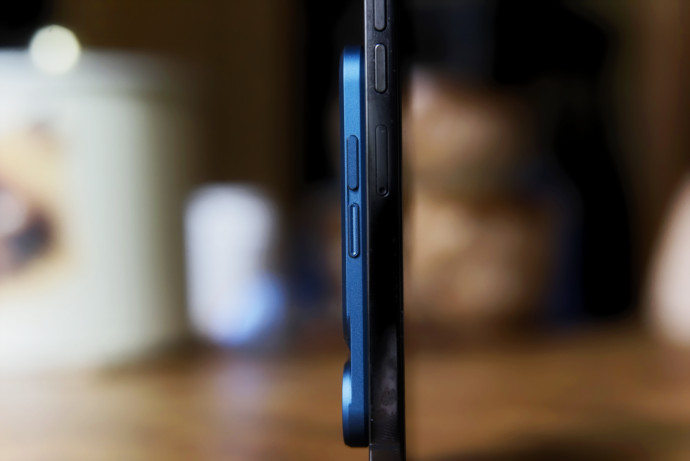
Last but not least, you can spot a LED ring on the upper side, indicating the current sampling rates:
- green for Bluetooth playback
- red for MQA rendering
- yellow for PCM playback
- and finally white for DSD files
Specifications
Like every modern DAC, at the heart of the Khadas Tea, you’ll find an ESS Sabre chip, an ES9281AC Pro.
A DAC advertised as a high-performance 32-bit, 2-channel audio D/A converter with Quad DAC and Time Domain Jitter Eliminator. And, as a SOC (system on chip) this chip also comes with its own headphone amplifier, analog volume control, and output switch, so brands like Khadas can focus on tuning.
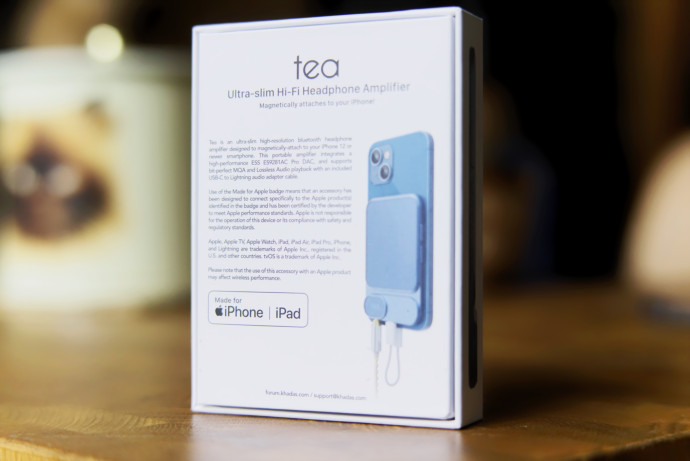
It’s a good DAC, with good specs, as you might see:
- up to 32bits / 768kHz PCM decoding + DSD512 support
- 130dB SNR and 122dB DNR
- ultra-low power consumption (1.5mW in standby mode)
- G-class amp with up to Vrms output power
- HyperStream II DAC architecture
- 64-bit accumulator and 32-bit processor
So nothing new under the sun, but thanks to Khadas background, I wouldn’t be surprised they pushed the Sabre DAC up to its utmost limit. Power isn’t massive, but the Tea can still manage to output a correct 20mW@300ohms, or 165mW@32ohms. Good numbers, nonetheless, considering the size of the DAC.
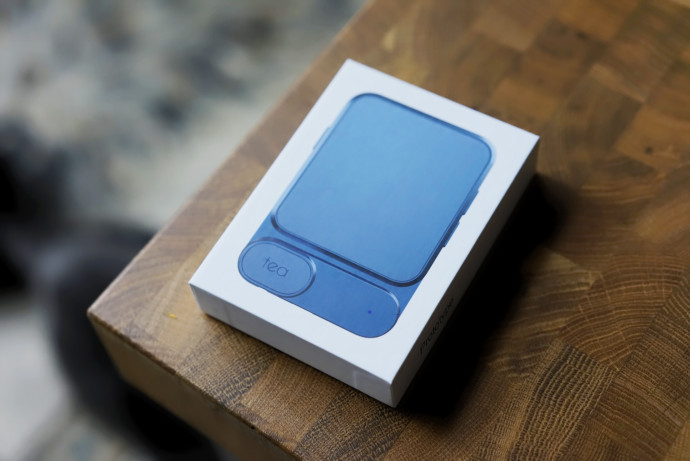
Bluetooth-wise, the Qualcomm QCC5125 chipset supports LDAC and apt-X HD making the Tea compatible with Hi-Res files, sent from a compatible source. Even better, the Khadas sports two microphones at the bottom, for phone calls and Siri. Neat!
For the nerds out there, here are the full specs.
Technical specs
- Type: USB DAC + Headphone Amplifier + Bluetooth
- Model: Khadas
- Chipset: Sabre ESS ES9281AC Pro
- Bluetooth: Qualcomm QCC5125
- Amplifier: Amplifier RT6863D (Buffer Stage)
- Frequency range: 20 – 40 000Hz
- Compatibility: PCM up to 32bit/768kHz – DSD up to DSD512
- SNR: 112dB / 116dB
- THD: < 0.0007%
- Output impedance: < 0.3dB
- Battery: 1160 mAh Lithium Polymer Battery
- Battery life: up to 8h
- Size: 95.5mm (l) x 63.8mm (w) x 6.25mm (t-min) / 7.95mm (t-max)
- Weight: 73.5g
- Socket: USB-C
- Price: €/$199
The review continues on Page Three, after the click HERE or by using the jump below.
Page 1: Khadas overview,
Page 2: Design & Build Quality, Bundle, Specifications
Page 3: Sound & Conclusion





